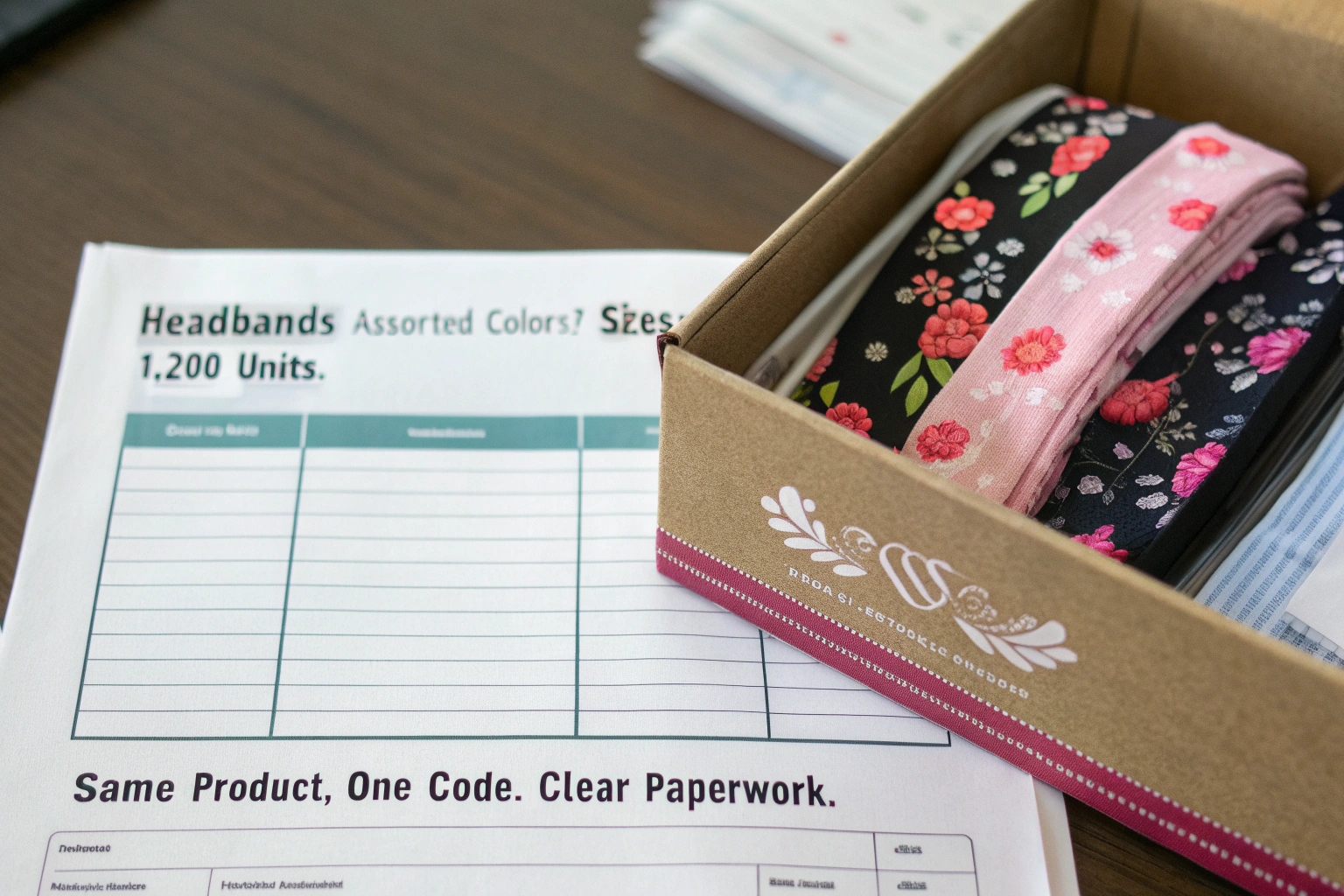You’ve created multiple colors, styles, or pack sizes of a headband or bracelet—but how do you declare them to customs without overcomplicating paperwork?
SKU variations should be clearly grouped and classified under shared HS codes when the product type is the same. Customs declarations must reflect accurate product counts, but not every variation requires separate line items.
At AceAccessory, we support global buyers managing dozens of accessory SKUs at once. From knit hat colorways to scrunchie bundles and belt sizes, we help our clients prepare customs documentation that’s efficient, compliant, and easy to audit. In this article, I’ll explain SKU variation strategies for customs, product grouping logic, and when differences like color or size matter.
What is SKU variation?
Before customs, before shipping—everything starts with inventory. That’s where SKUs matter most.
A SKU (Stock Keeping Unit) variation is a unique identifier for each version of a product, typically differing by color, size, style, or packaging.
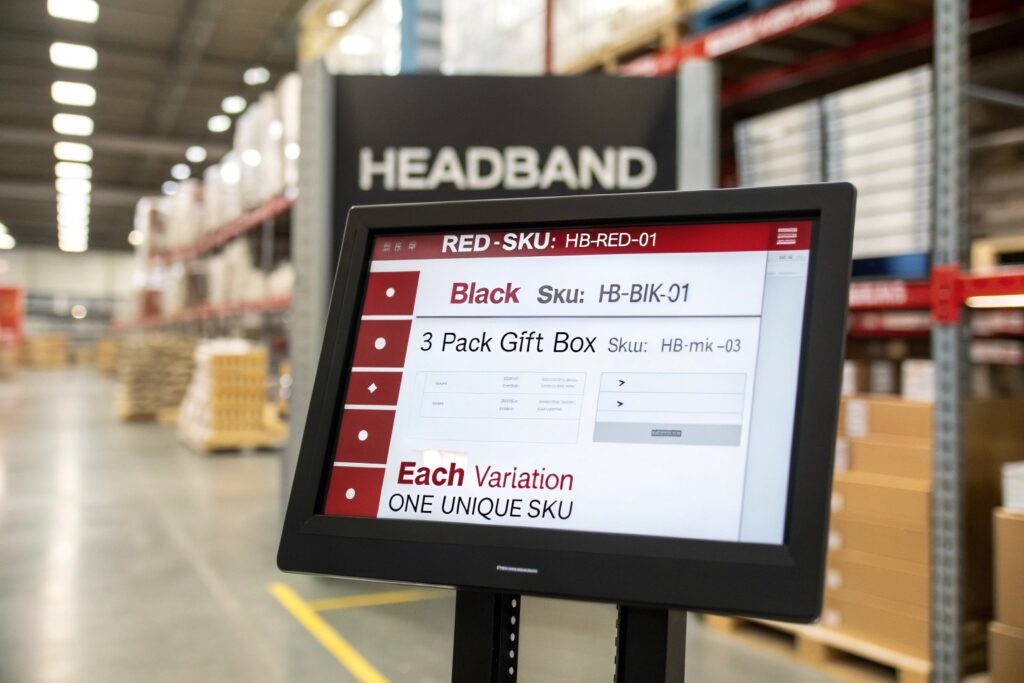
Why do accessory sellers use SKU variations?
Let’s say you're selling a satin headband in 3 colors: black, pink, and ivory. While the product is the same, each variation needs:
- Separate inventory tracking
- Unique barcodes (e.g., FNSKU for Amazon)
- Distinct packaging or labeling
- Retail visibility for customer selection
Example SKU logic:
| Product | SKU Code | Color | Size |
|---|---|---|---|
| Satin Headband | HB-SAT-001-BK | Black | OSFM |
| Satin Headband | HB-SAT-001-PK | Pink | OSFM |
| Satin Headband | HB-SAT-001-IV | Ivory | OSFM |
We recommend keeping SKU codes consistent and structured. This helps avoid confusion when you need to print labels, create packing lists, or declare customs forms.
In customs declarations, you can group SKU variations under a single HS code line, unless there is a material or functional difference (e.g., one SKU includes a battery, one doesn’t).
Can SKU be same for multiple products?
New importers often ask: can I use one SKU for everything in a product line?
No, each distinct product variation should have its own SKU for tracking, especially in multi-market sales or regulated imports.
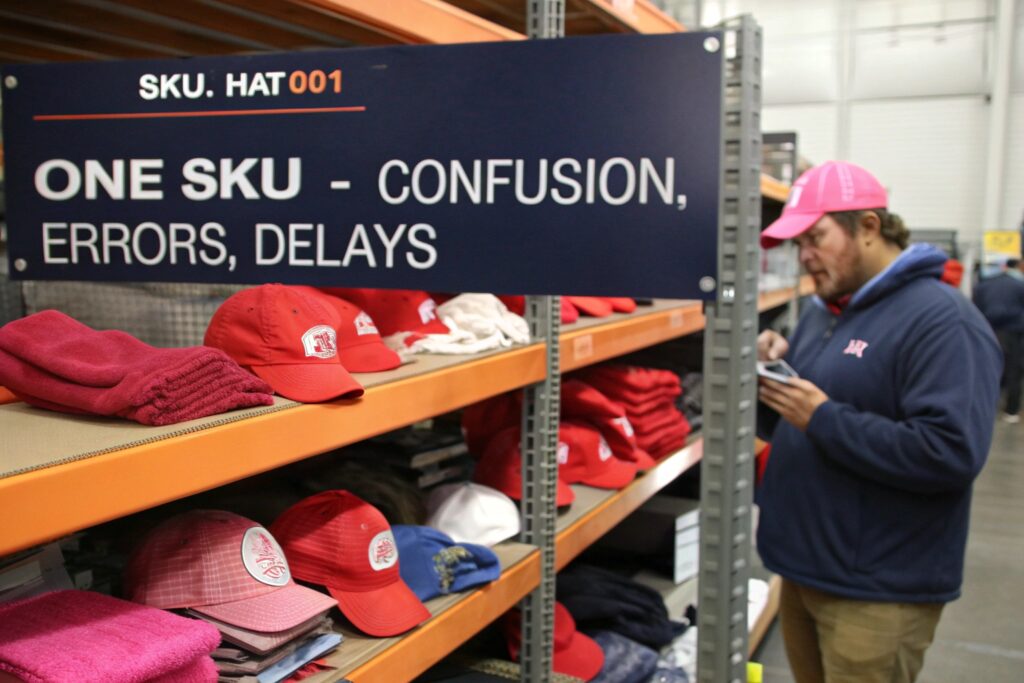
What are the risks of reusing SKUs?
Here’s what can go wrong:
- Inventory Confusion: Warehouses can’t tell variations apart
- Customs Inaccuracy: Might declare wrong value, material, or origin
- Barcode Conflicts: Systems like Amazon require unique identifiers
- Compliance Issues: Some countries require exact counts by color/size
Here’s an example:
| Product Type | SKU | Risk Level |
|---|---|---|
| Headband (Red) | HB-2023-RD | ✅ Unique |
| Headband (Blue) | HB-2023-BL | ✅ Unique |
| Headband (Both) | HB-2023 | ❌ Too generic |
We’ve helped clients relabel inventory after shipments were held at customs because they couldn’t explain which SKUs matched which values. Now, we require SKU mapping for all projects at AceAccessory before packing.
Do different colors have different SKUs?
This is one of the most common SKU questions—and the answer is yes.
Yes, each color variation should have a different SKU, even if the product type, material, and use are the same.
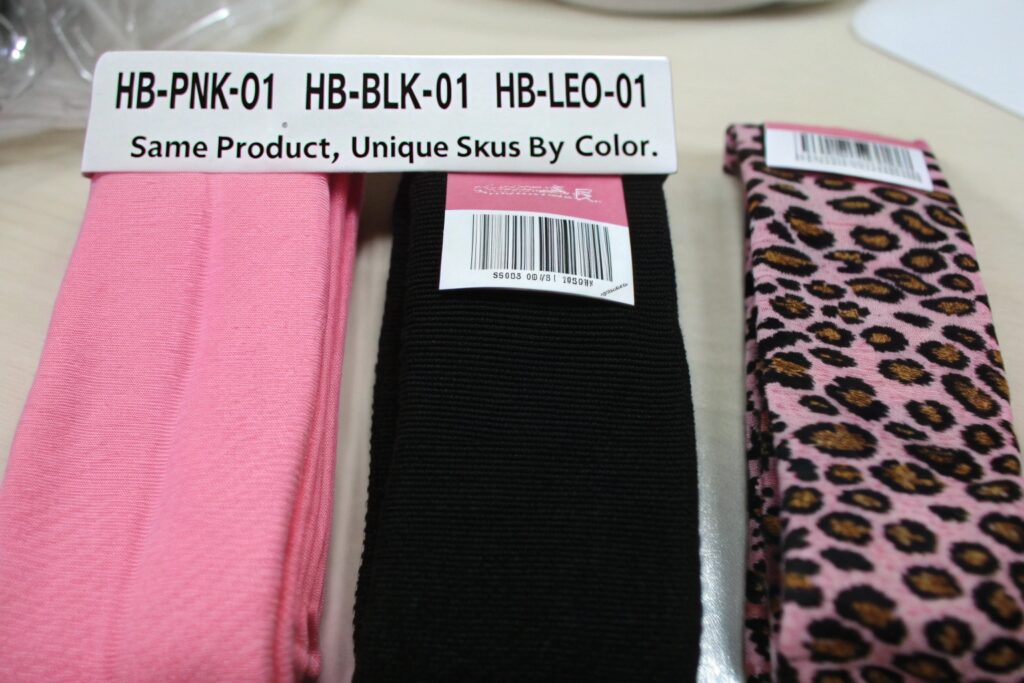
Why does color matter in inventory and customs?
From a retail perspective, color drives consumer choice. From a logistics perspective, it affects:
- Inventory accuracy
- Carton-level organization
- Pick and pack automation
- Image and label association
From a customs perspective, if all variations are made from the same material and serve the same purpose, you can group them under one HS code line.
Here’s how we usually list variations:
| Declared Line on Invoice | Description | Quantity |
|---|---|---|
| HS Code 6117.10.00.00 | Polyester Knit Headbands (3 colors) | 3,000 pcs |
| Notes | SKU HB-AQ-01-BK / PK / GN grouped | — |
We also attach a SKU master sheet that maps colors and quantities for client records and customs backup.
This system gives you the control of SKU-level detail with the efficiency of grouped declaration.
Do different flavors have different SKUs?
While we don’t sell food, this is a similar logic question—and it applies to accessories too.
Yes, different flavors, scents, colors, or variations that affect product identity or value should have separate SKUs, even if grouped under one customs line.
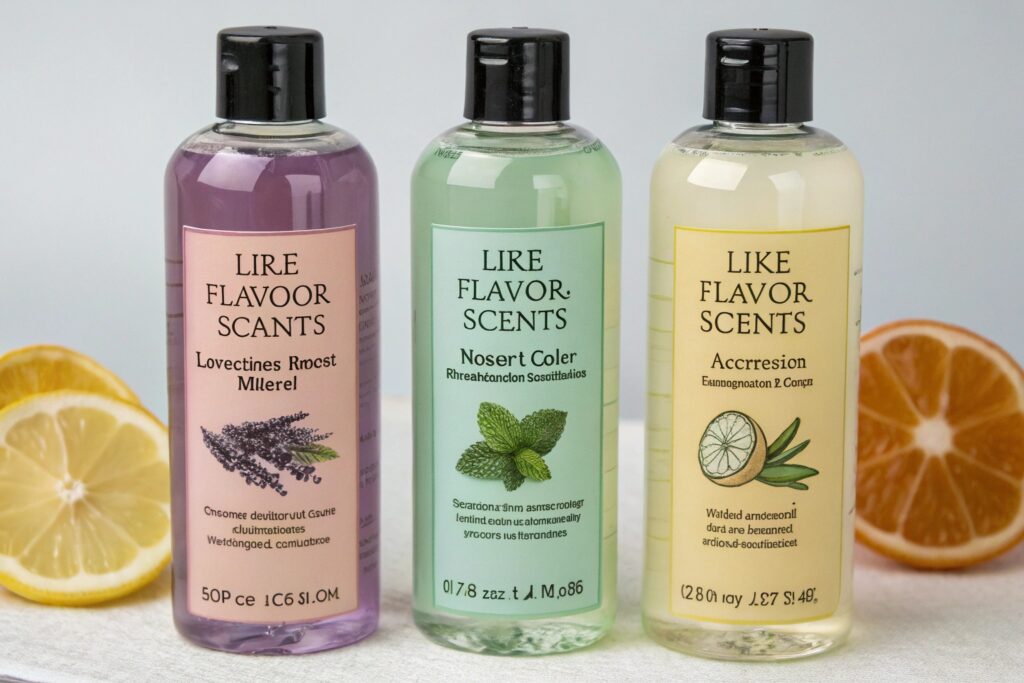
How does this logic apply to accessory kits and bundles?
Let’s say you’re shipping:
- Hair clip packs: 3 styles × 4 colors = 12 SKUs
- Each pack is priced differently based on color or finish
You’ll need to:
- Assign a unique SKU to each variation
- Print matching barcode labels
- Keep records of declared unit value per SKU (for customs)
Customs may only want:
| Line Item | Description | HS Code | Value |
|---|---|---|---|
| Acrylic Hair Clip Pack | Mixed colors, SKU HC-2023 Series | 9615.11.00.00 | $0.45/pc |
But for internal use, Amazon listing, or warehouse prep, you still track SKU-level detail.
We always recommend adding a second tab to your packing list with SKU-level breakdown, even if customs only sees grouped values. It protects you in case of inspection or audits.
Conclusion
SKU variations are essential for clean inventory and clear customs declarations. For accessories like knit hats or hair bands, each color or size should have its own SKU—but customs declarations can group them when HS code and material match. At AceAccessory, we help importers label, document, and declare smart—so your shipments arrive fast and stay fully compliant.

